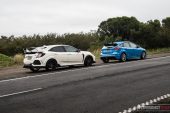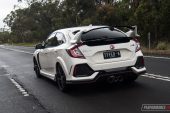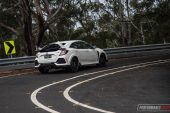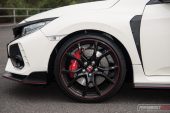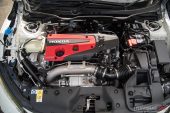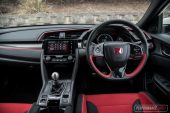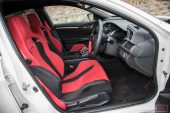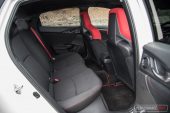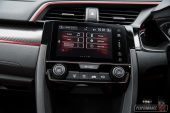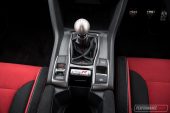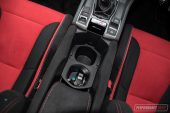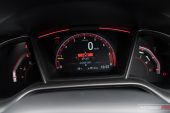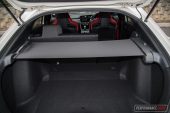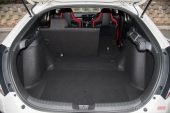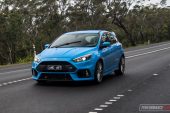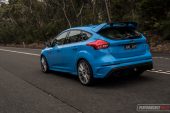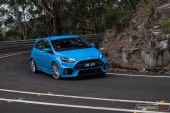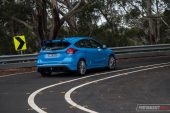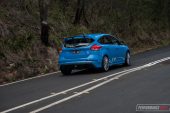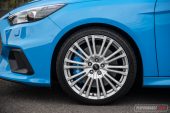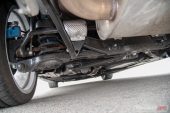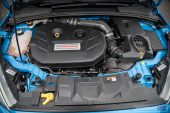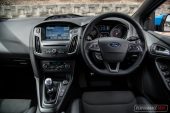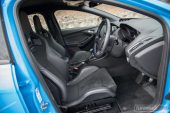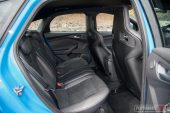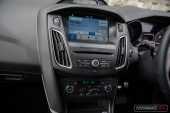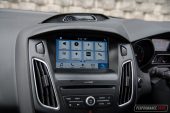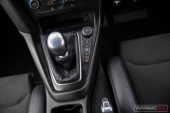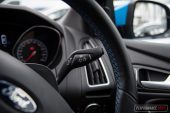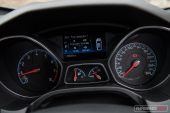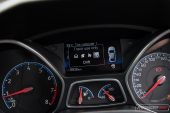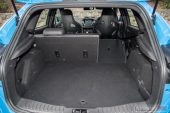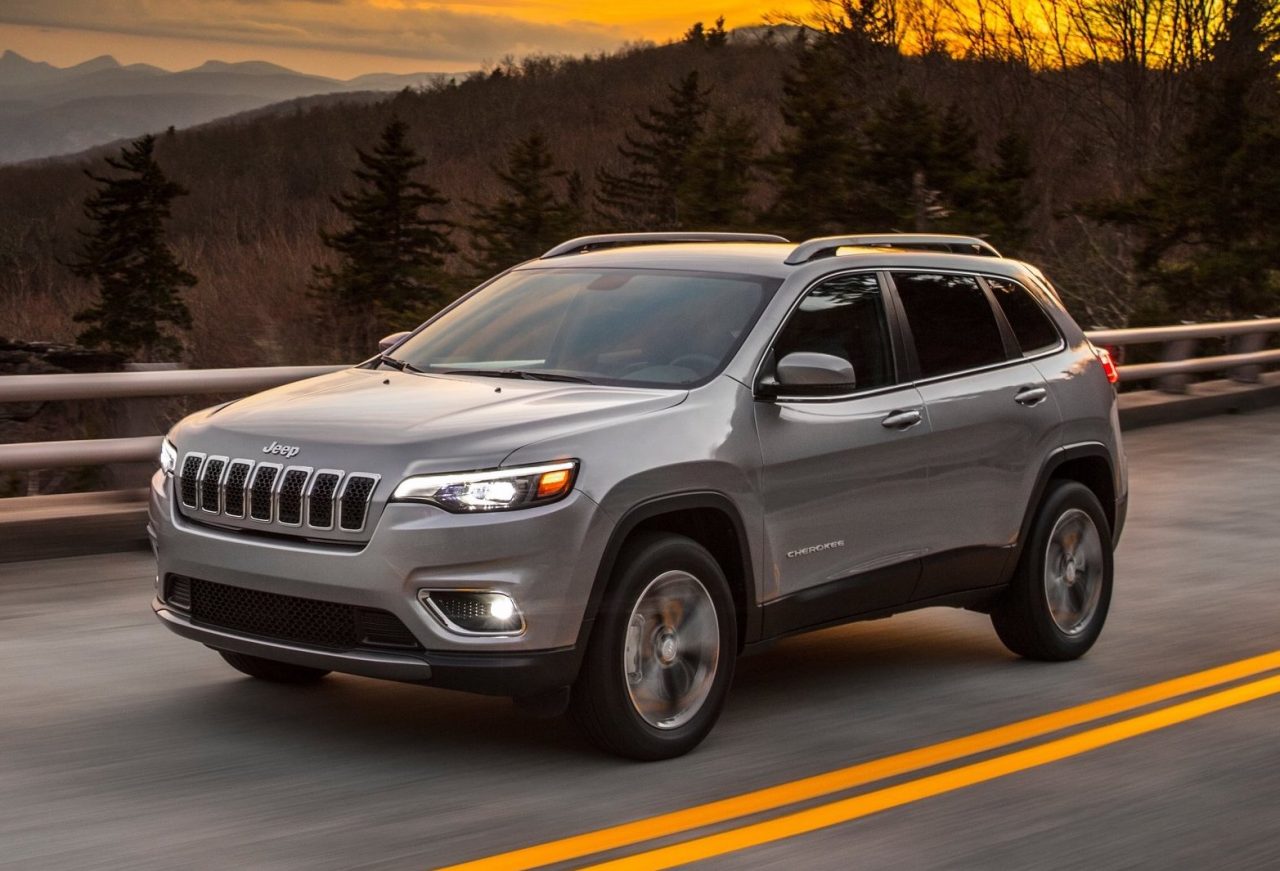| SPECS | PACKAGE | DRIVE | VERDICT |
Right now these two are on fire. Hot hatches don’t get any hotter. The Ford Focus RS blew everyone’s mind when it was launched last year, and now the all-new Honda Civic Type R has eyes watering with envy thanks to its Nurburgring-conquering lap record. How does the modern newcomer shape up against the current king? Let’s find out.
For this comparison we’ll mainly concentrate on how the Honda compares against the Ford – we’ll be putting together separate reviews of each car in the near future to go over the more specific areas.
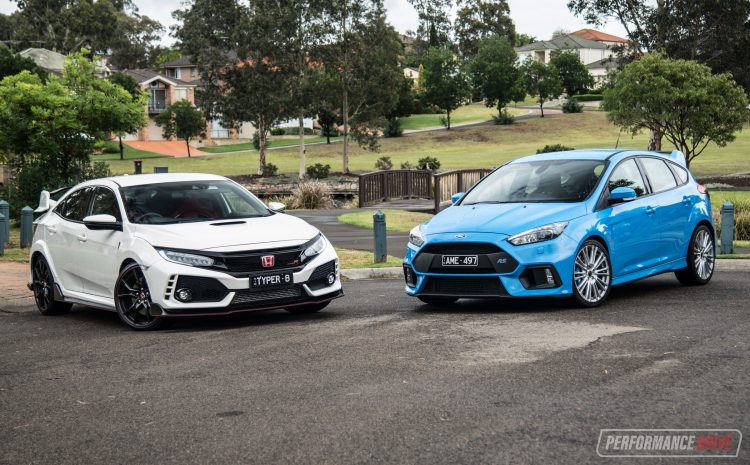
The Honda Civic Type R really is all new. It’s based on the latest Civic – which is a great package in itself – featuring a bespoke 2.0-litre turbocharged four-cylinder that pumps out 228kW and 400Nm. This is sent through a six-speed manual and into a limited-slip-diff-equipped front-wheel drive system. Obviously there’s more to it than that for it to achieve its cracking Nurburgring lap time of 7:43.80, but it’s basically the bee’s knees in front-wheel drive performance at the moment. And don’t worry, Honda fans, it comes with VTEC.
From Ford we have the Focus RS. Under the bonnet is a 2.3-litre turbo four-cylinder that generates 257kW and 440Nm. Like the Honda, Ford doesn’t offer an automatic option. But unlike the Honda the Focus RS is all-wheel drive. It hasn’t claimed a Nurburgring title but it is one of Ken Block’s favourite cars, which is probably enough said right there.
Pricing is as close as it gets for these two. The Honda starts from $50,990 and Focus RS starts from $50,990. However, Ford does offer a Focus RS Limited Edition which kicks off from $56,990. It adds Recaro bucket seats, a Quaife front diff, unique wheels and Michelin Sport Cup 2 tyres, black exterior details (roof, side mirrors), and autonomous emergency braking.
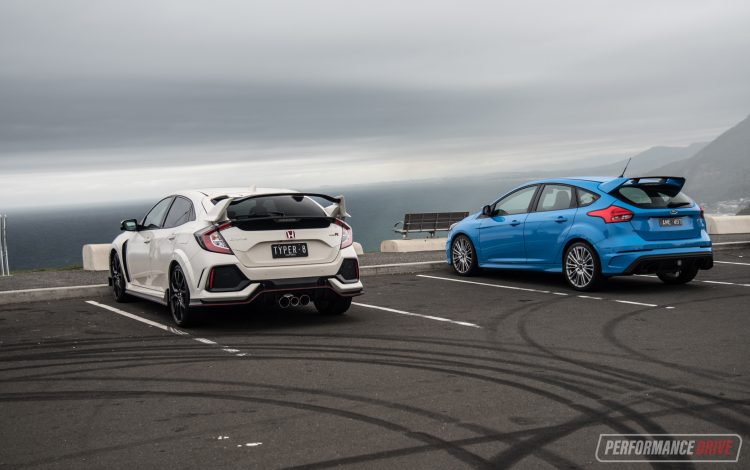
2018 Honda Civic Type R vs Ford Focus RS – THE SPECS
| 2018 Honda Civic Type R | 2018 Ford Focus RS | |
|---|---|---|
| Engine | 2.0-litre turbo four-cylinder | 2.3-litre turbo four-cylinder |
| Output | 228kW@6500rpm / 400Nm@2500-4500rpm | 257kW@6000rpm / 440Nm@1600-5000rpm |
| Transmission | Six-speed manual | Six-speed manual |
| Drive type | Front-wheel drive, limited-slip diff | All-wheel drive, limited-slip diff |
| Wheels | F & R: 20×8.5, 245/30 | F & R: 19×8.0, 235/35 |
| ANCAP | Five stars (regular Civic) | Five stars (regular Focus) |
| Tare weight | 1365kg | 1543kg |
| Power-to-weight | 5.98:1 (kg:kW) | 6.00:1 (kg:kW) |
| Official fuel economy | 8.8L/100km | 8.1L/100km |
| Economy during test | 9L/100km | 10.5L/100km |
| Fuel capacity/type | 47L/95 RON | 52L/95 RON |
| Power efficiency | 25.90kW:L/100km | 31.72kW:L/100km |
| 0-60km/h | 3.38 seconds* | 2.29 seconds* |
| 0-100km/h | 5.90 seconds* | 5.15 seconds* |
| 60-110km/h | 3.33 seconds* | 3.78 seconds* |
| 1/8 mile | 9.34 seconds at 136.4km/h* | 8.68 seconds at 139.1km/h* |
| 1/4 mile | 14.12 seconds at 168.8km/h* | 13.38 seconds at 172.0km/h* |
| Max acceleration | 0.737g | 0.991g |
| 100-0km/h braking | 2.92 seconds at 36.61 metres* | 2.96 seconds at 39.32 metres* |
| Max deceleration | -1.160g | -1.148g |
| Decibel at idle | 44* | 45* |
| Peak decibel at 60-100km/h | 87* | 85* |
| Priced from | $50,990 | $56,990 |
* Figures as tested by PerformanceDrive on the day. Factory claims may be different
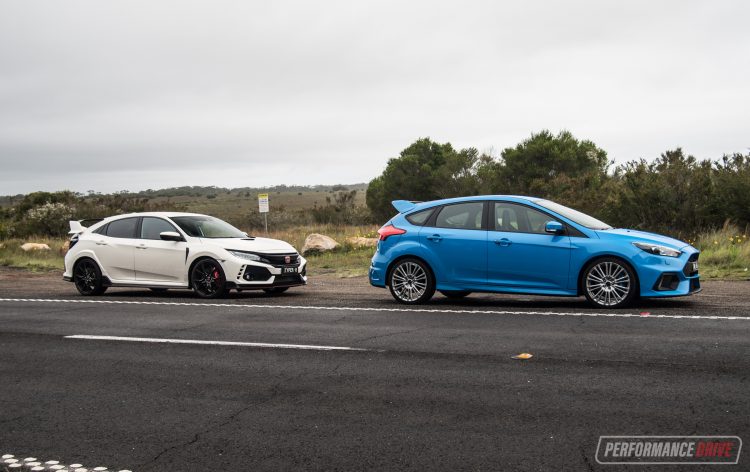
2018 Honda Civic Type R vs Ford Focus RS – THE PACKAGE
Inside, both of the cars are proper sports cars. However, they offer two very different approaches to the market. In the Ford it’s a hardcore, hold on, no-nonsense get-on-with-driving atmosphere. The front Recaro bucket seats are serious. It’s like they are lifted straight from a race car. The side bolsters can hurt you as you climb in, they’re that rigid and protrusive. They hold you in though, like a roller-coaster seat.
Stepping into the Honda, you’ll immediately warm to the softer – albeit, red – bucket seats. The side bolsters aren’t quite as aggressive and it doesn’t matter as much if you accidentally sit on the corner as you get in; the bolsters will compress thanks to softer foam. Once you’re in, if you fit in, it’s obvious the Type R is the more comfortable place to be.
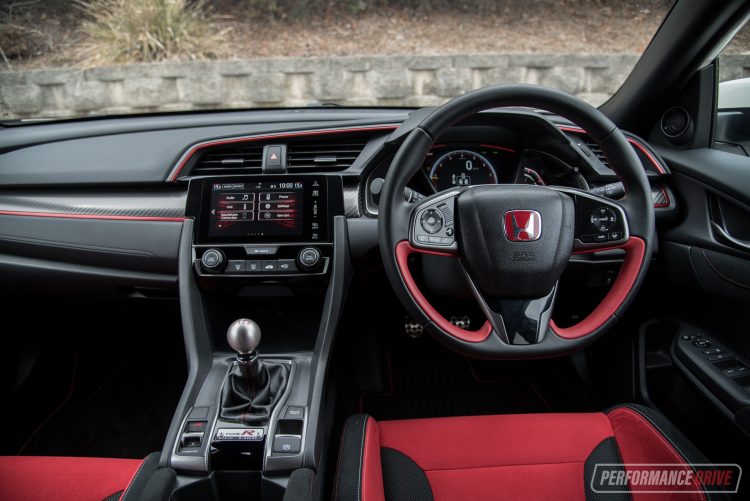
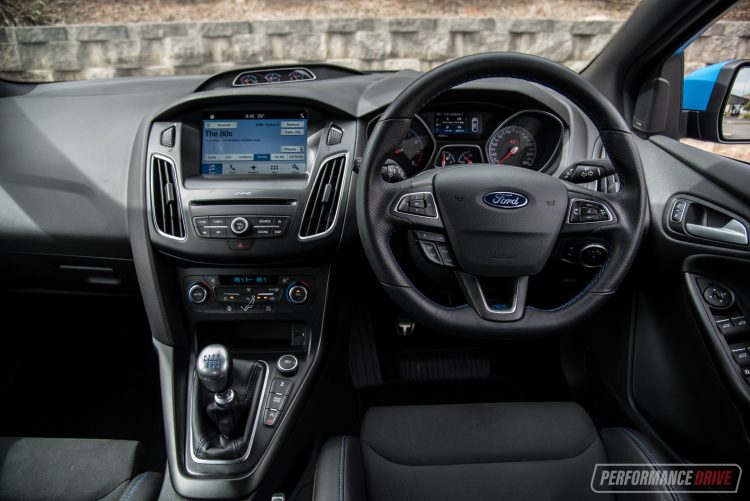
It’s actually more premium in the Honda too. Scratchy, Maccas-tray plastics aren’t as frequently used, and the central dash fascia is both nicer on the eye and to touch, with soft Alcantara for the centre console. Ford’s awkward spewing of climate controls and basic mono-tone plastics don’t help. So, the Honda takes the trophy for cabin design, practicality and material quality. It also takes the medal for space.
You can easily haul around two adults in the back of the Civic, whereas in the Ford those big racing seats take up some room. Even in standard form though the new Civic is impressively spacious compared with most of the small hatches on the market, and not just compared with the Ford. The slimmer seats in the Type R do make it easy getting in and out of the back, and again, it is noticeably more premium once you’re in the back. Both offer rear guests bottle holders in the doors, but no climate vents on the back of the console.
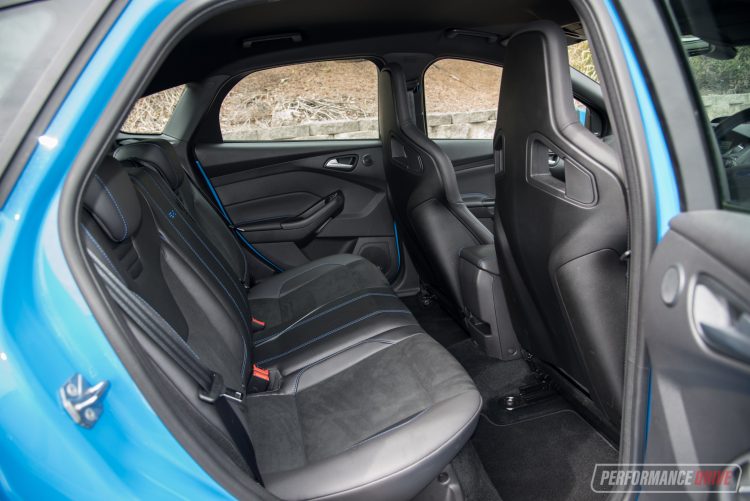
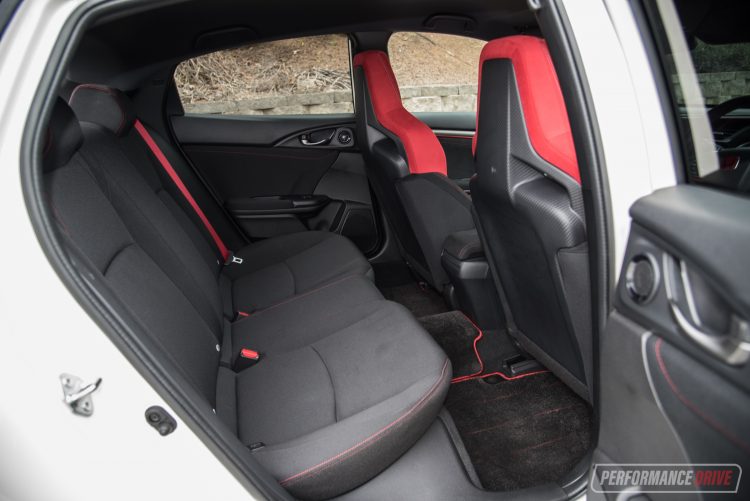
Boot space is an important area in a hot hatch. What if you want to put in a quick lap at the track on your way from picking up the shopping? These two are here to fulfil your needs. In the Honda there’s 414 litres, while the Focus RS presents just 260L due to the existence of the rear diff. We’re trying to be as minimally biased as possible here but it’s another win for the Honda.
The Honda has the Ford trumped in the features departure as well. Easily. It comes with adaptive cruise control, its clever LaneWatch side-view camera system, LED headlights and taillights, active noise and vibration cancelling technology, and loads of storage solutions around the cabin with multiple power ports and HDMI.
We like the Honda’s touch-screen media interface better than the Ford SYNC system, mainly because it’s cleaner, with less complicated menus. However, neither of them are at the industry benchmarks, although the Honda does come with Apple CarPlay and Android Auto connectivity. Both come standard with sat-nav and a rear-view camera. In recent crash tests, the standard Focus and standard Civic have been given a five-star safety rating.

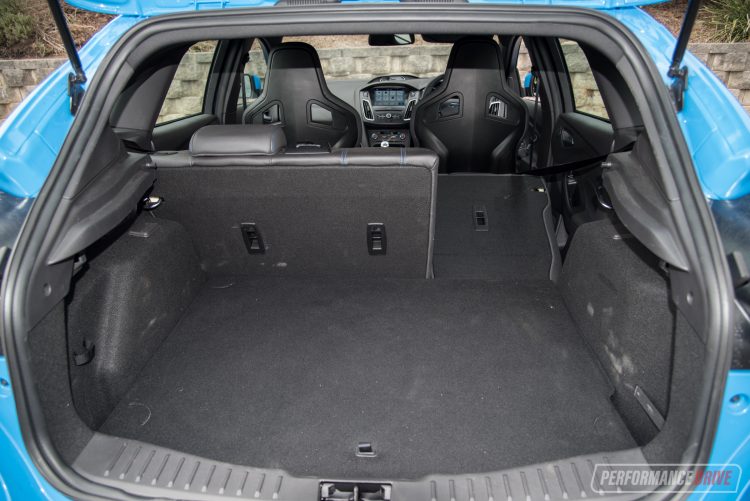
2018 Honda Civic Type R vs Ford Focus RS – THE DRIVE
You never get tired of firing up the 2.3-litre turbo in the Ford. It produces a proper rally-car sound, especially in the raciest Track and Drift driving modes. Compared with the Honda, the Focus is easily the better-sounding hot hatch. On the other hand if you do appreciate refinement and you’re not interested in waking up the neighbours with every morning start-up, then the Honda will be more appealing.
Its sound is typical modern Honda, with a choked up intake and heavily baffled exhaust taking away almost all of the traditional, roaring VTEC soundtrack that you may have anticipated. Fortunately, the Honda does love a rev. Peak power, despite being turbocharged, isn’t reached until the tacho needle hits 6500rpm. And that’s high for a modern car, and more so for a turbo car. It’ll actually rev to 7000rpm if you want it to, and we must say the traditional metallic engine sound does start to come through at this tempo.
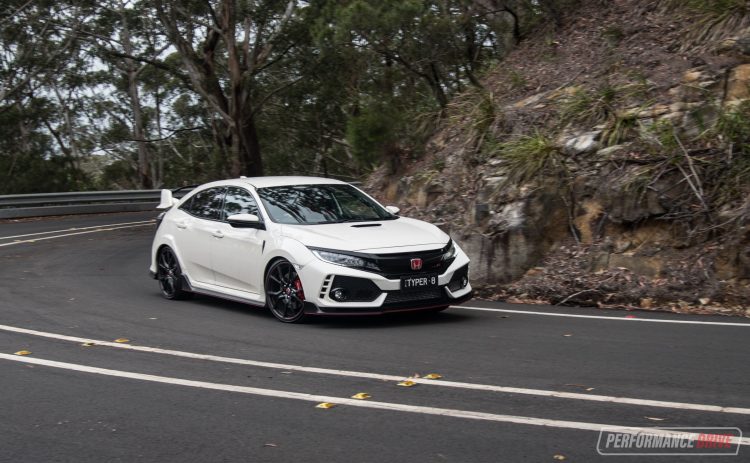
Under normal driving conditions the Honda’s engine feels smoother and less intimidating. Peak torque is spread over a wider rev range in the Ford, from an impressive 1600rpm to 5000rpm, compared with 2500-4500rpm in the Honda, but the way the turbo boost builds and the less intense character of the torque in the Honda makes it easy to drive around town. There’s still plenty of torque available, and you can escape from roundabouts in third with no major hesitation, so long as you don’t expect it to instantly rev to redline if you flatten the go-pedal.
In the Ford it has no trouble going around roundabouts in third. It will happily pull you up to speed, and even provide decent acceleration as it quickly climbs the revs. As a result, the Ford’s more versatile and effortless nature means it doesn’t have to work as hard, and thus comes slapped with an official average fuel consumption of 8.1L/100km, against the Honda’s steeper 8.8L/100km average.
This tends to be reversed in the real world. We saw upwards of 10-11L/100km in the Ford and 9-10L/100km in the Honda. As we said, the Civic is the more refined, smoother, and more settled engine which perhaps encourages smoother and more efficient driving when you’re not hunting lap records.
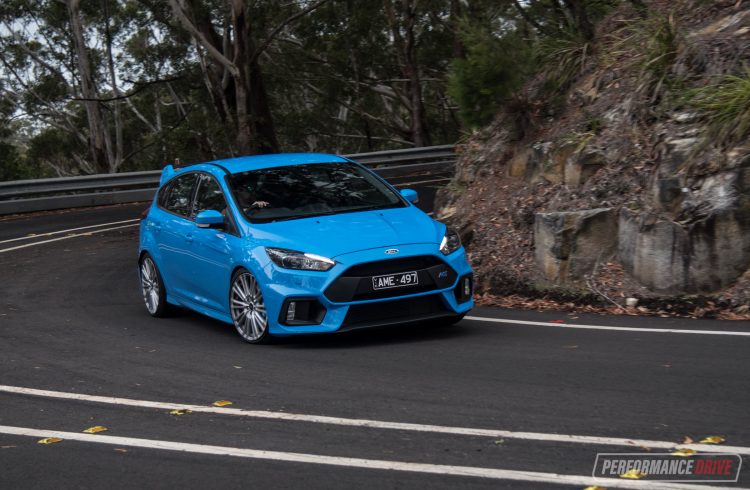
Speaking about smoothness; the suspension. We like suspension here at PD. Secretly, we’re always hunting for the ideal suspension setup with every new car we test. And we think we may have found it. The setup in the Honda is impeccable. You see how low the car is, and how low the profile tyres are on the 20-inch wheels (19s on Ford), and you just think boy this is going to be bone-shattering. But, somehow, it’s not. We’re not just talking about hot hatch realms either.
Honda has struck an often unachievable perfect balance between compliance, road holding, body control, and ride comfort with the new Type R. And we suspect the setting has had a big part in the car’s Nurburgring lap record – a track where there are unforgiving bumps that will happily shunt cars off the racing line, or into the air.
Along our usual mountain road test route, which is very bumpy and with an uneven surface across the width of the road, the Civic Type R is a masterpiece. You can smash down and around corners that feature mid-corner bumps and the Civic soaks them up like Mario collecting coins. It really is amazing. And the car stays so flat and neutral.
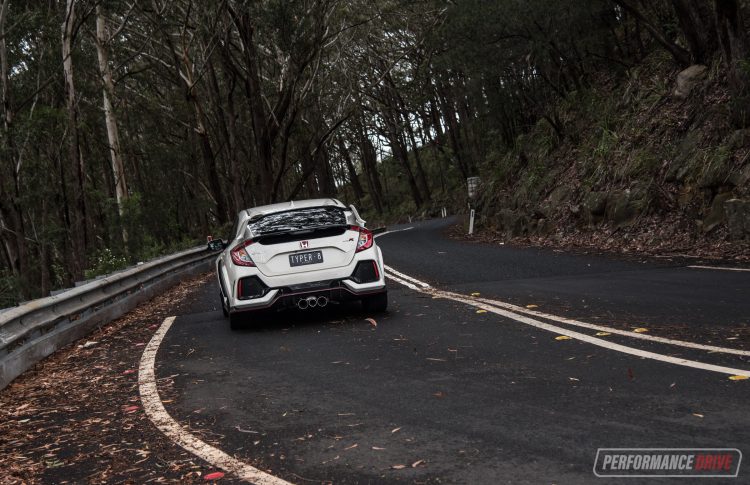
Turning in sharp results in virtually no understeer at all, and you can jump hard on the power as early as you like and the helical-type limited-slip differential will fling you around the corner with utter competence, with no free-spinning wheelspin at all. As one of the front wheels catches a smidge of air, chirping on the tarmac, screaming up to the next corner, you become easily convinced of that Nurburgring lap time. As a bonus, it doesn’t really matter how far along the driving experience spectrum you are; the Honda always feels confident, safe, rewarding, and connected to the road. Everyone can enjoy this vehicle.
Over in the Ford. The RS is definitely more exciting, louder, faster, and grippier than the Honda. It’s also a bit easier to see out of. A lot of this is a compromise though. For example, it grips hard due to very stiff suspension. Even in the default driving mode, the RS isn’t for the fainthearted. But this allows for huge cornering g-forces. It will blow your mind.
Ford has fit a suspension mode button on the end of the indicator stalk for drivers, giving some versatility. For example, you might want to drive in the Drift or Track mode but you’re not a fan of the super-stiff ride. This neat little button is a great solution. This is an area where the Honda falls down actually.
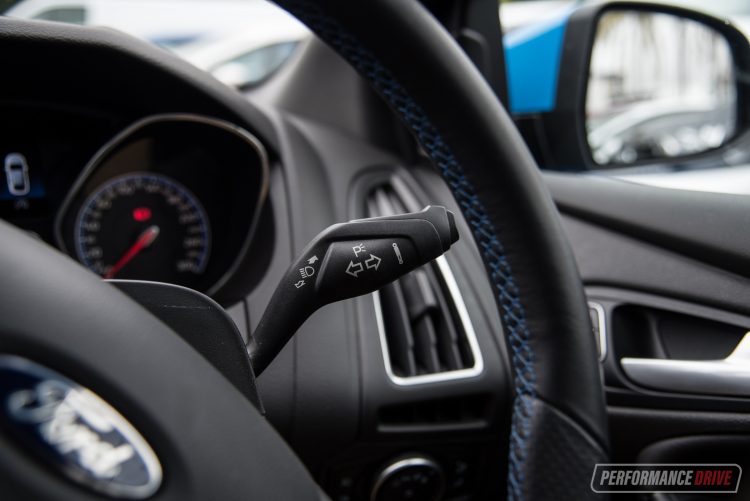
The are three driving modes in the Honda, with each altering the electronic steering, engine mapping, and the suspension. Our main gripe is the steering. It goes very heavy in the sportiest ‘R’ mode but because it’s an electric system it seems kind of pointless just to go heavy for the sake of it. If it were a regular hatch or warm hatch, it’d be excusable. But this is a Type R. We think it deserves something better. We also think it would be nice to be able to create a custom driving mode, a bit like in the Ford, mixing and matching various settings.
The steering in the Ford is much more tactile. You immediately feel a direct connection with the front wheels. It is a touchy, almost fidgety setup though, and it can become tiresome on the highway. Along a tight, twisty road, the Focus RS is extremely agile. It darts into corners lie a fly. And like the Honda, there’s pretty much no understeer to contend with. In fact, in the Drift mode the Focus will oversteer momentarily under power. You only need to start throwing it around and really chucking it into corners to get full-on rally drifts going. It’ll also perform four-wheel power donuts too, if that’s your thing. The guys at Ford Performance have done an excellent job at creating a road-legal rally car with the RS.
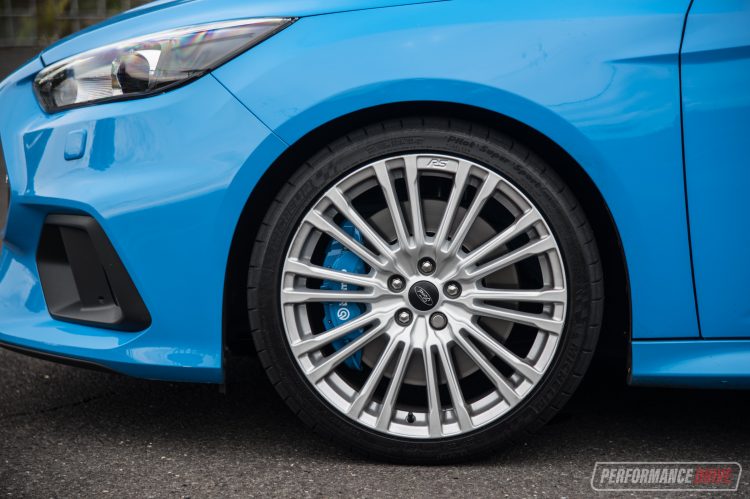
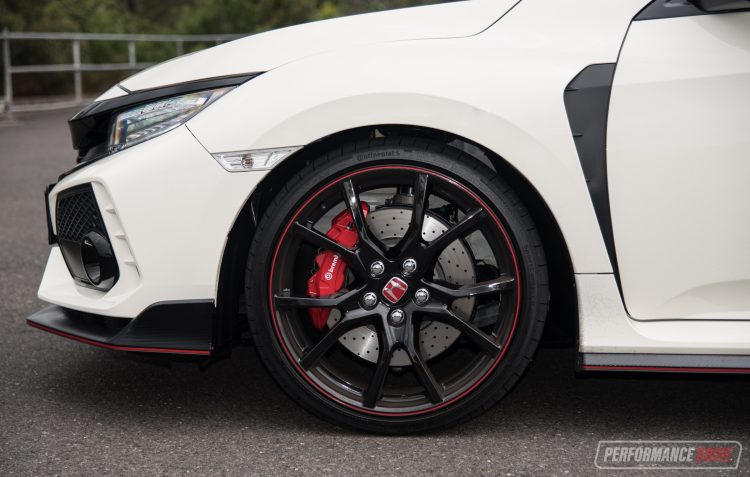
2018 Honda Civic Type R vs Ford Focus RS – THE VIDEO
2018 Honda Civic Type R vs Ford Focus RS – THE VERDICT
The definition of a hot hatch is a car that you can use for the daily commute and pick up the kids from school, do the shopping and all that, but also a car that encourages you to try and peel the tyres off around corners. It’s a vehicle philosophy designed to suit both worlds and both types of driving, equally, with as little compromise as possible. And for that reason we award the Civic Type R as the best modern hot hatch out of these two. If we had a scale out of 10 for everyday practicality and another one for the racy driving experience, the Civic gets 9 in both cases. In the Ford, it’s a 10 for racy driving but 7 for practicality.
We love the Focus RS just because it is such a crazy car. It’s that mate that always wants to party and always comes to your house with a six-pack of beers. And for that it definitely gets our respect. But, as a car, as a piece of transport, a fast and wholly capable piece of transport, the Honda is the superior pick in our opinion. It does more things for more people, and therefor should be more appealing to a wider range of buyers.
As always, if you’re thinking about buying a new car don’t forget to click here to speak with our car buying specialists.


